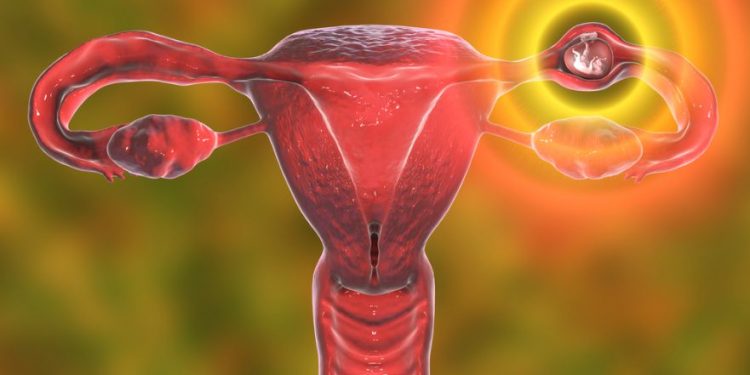Uterine polyps are overgrowths of the inner lining of the uterus (endometrium). They appear as small, fluid-filled bumps that may be a few millimeters or several centimeters in size. Polyps are usually found in women who have irregular or heavy bleeding. They may occur in premenopausal or postmenopausal women. Polyps are usually benign, but can be pre-cancerous or cancerous in 2-4% of cases.
Polyps develop because of overgrowth of the uterine lining and the growth of tissue inside the uterus. In some women, polyps cause a problem with menstrual periods or are associated with infertility. In other women, they don’t cause any problems. The reason for this difference is not clear. Generally, polyps are not diagnosed until women present to their doctors with problems. Irregular bleeding or spotting between periods, or abnormal bleeding during a period are the most common symptoms of polyps. In a few cases, the polyps protrude through the cervix and are seen by the doctor during a physical examination. A polyp can also be detected by a pelvic ultrasound or a Pap smear. Polyps can be identified by a special ultrasound test called a saline infusion sonohysterogram. This uses saline (sterile salt water) to fill the uterus and expand it so that the doctor can see any polyps inside.

If a polyp is diagnosed, the doctor will discuss treatment options. In most cases, the doctors recommend that polyps be removed with a procedure called a dilation and curettage or D&C. This removes the polyp and also scrapes the walls of the uterus to remove any tissue that is attached to the uterus. This is a surgical procedure done in the hospital.
Another way to treat a polyp is with medication. Hormonal medicine can decrease blood flow to the uterus, which may help reduce bleeding or prevent the polyps from growing. However, this is not a long-term solution and the polyps can grow back.
In some cases, a woman’s doctor will choose to just watch the polyps and wait to see if they go away on their own. This is a fairly safe option in premenopausal women and in postmenopausal women who don’t have risk factors for endometrial hyperplasia or cancer (like obesity, a history of endometriosis, or diabetes). Asymptomatic polyps that are 2 cm in diameter in premenopausal women can be watched rather than treated if the patient is not concerned about fertility.
In some cases, the polyps may return and a woman will need to have them removed again. The decision to remove them again depends on whether a woman wants to try to conceive or not, and what the doctor finds during surgery. It is important for the surgeon to get as much of the polyp as possible, because about a third of all malignancies in endometrial polyps happen at the base of the polyp. Also, younger women who want to conceive need to have the polyps removed in a way that minimizes damage to the endometrium.









